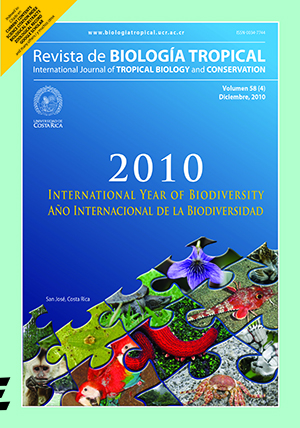Abstract
The information of trophic interactions among species is essential to understand ecosystem function. To assess this in four Diplectrum species, we analyzed the stomach contents of 397 individuals caught using shrimp trawling nets off the coasts of Jalisco and Colima, Mexico. Main food component of D. eumelum were fish of the Order Pleuronectiformes, followed by shrimps (Metapenaeopsisspp). D. euryplectrum feeds mainly on crustaceans, with stomatopods (Squilla mantoidea) as main food items followed by shrimps and brachyurans. Fish and polychaetes had a low representation in the diet of this species. D. labarum feeds mainly on crustaceans, mollusks and fish. The stomatopod Eurysquilla veleronis contributed to with a high diet percentage by weight, followed by shrimps (mostly Solenocera florae) and brachyurans, as well as the squid Lolliguncula diomedae. Fishes (Ophidion spp.) were also an important component of the diet of this species. The most common preys of D. rostrum were crustaceans, mollusks, polychaetes and fish. The squid Lolliguncula diomedae and fishes of genus Ophidion were also well represented in the diet. Diet breadth index yielded significant differences between species. The number of diet items varied from 16 in D. euryplec-trum to 6 in D. eumelum. The average value of overlap (0.247) was not significantly different (p=0.118) from the expected one for a null model (0.174). The observed variance of the overlap index (0.071) was significantly higher (V=0.025, p=0.0004) than the value expected for a null model.
##plugins.facebook.comentarios##

This work is licensed under a Creative Commons Attribution 4.0 International License.
Copyright (c) 2010 Revista de Biología Tropical


